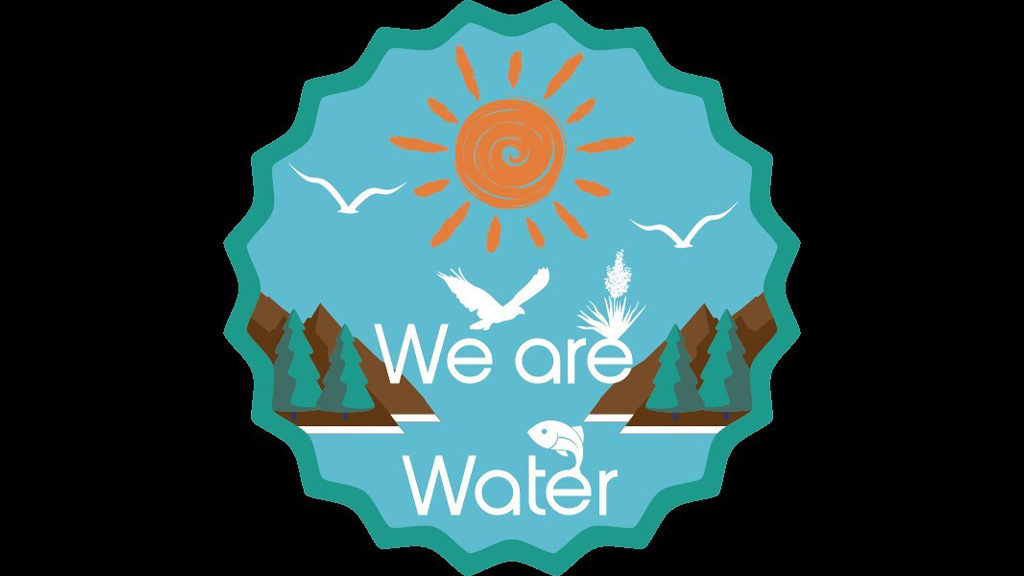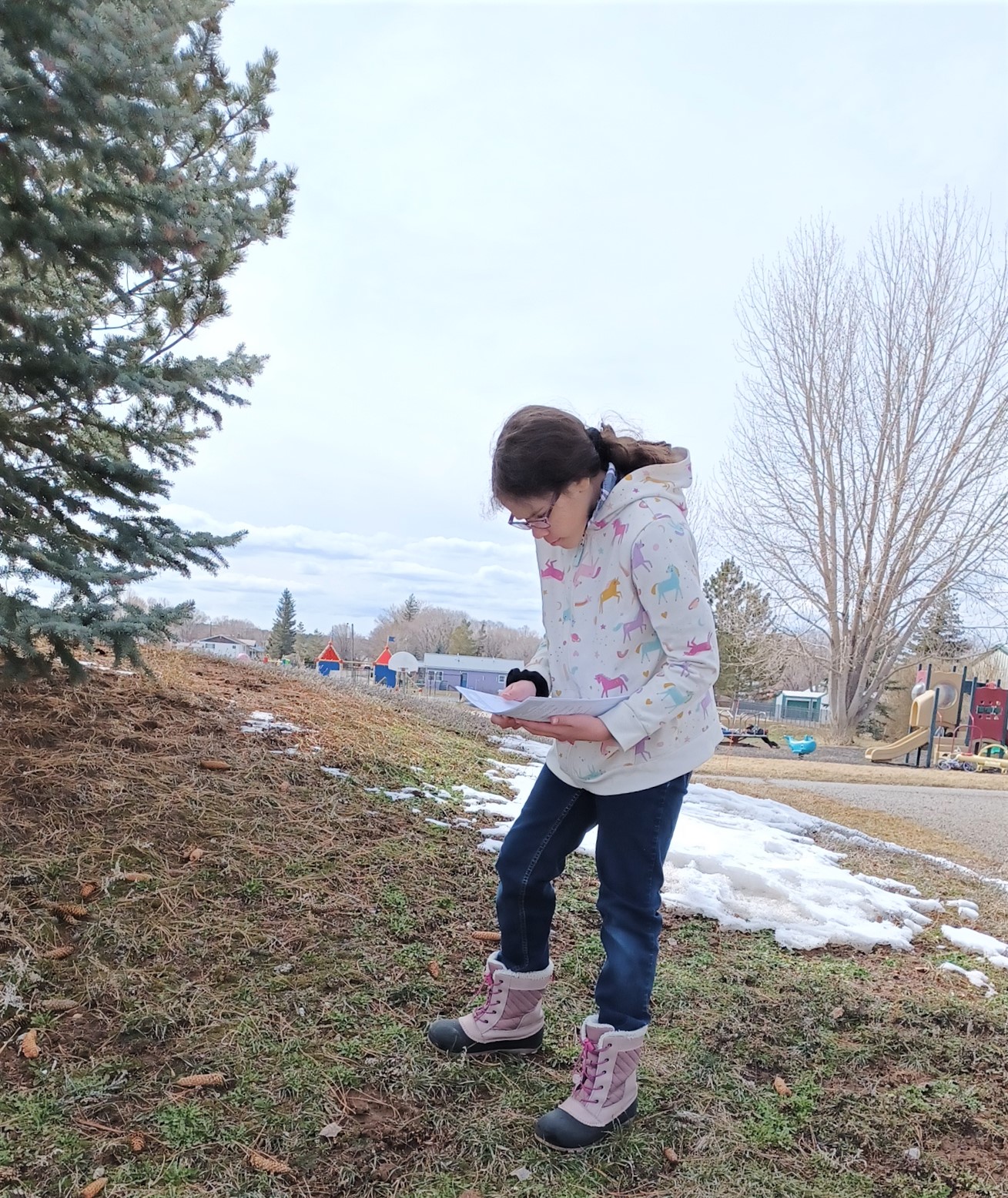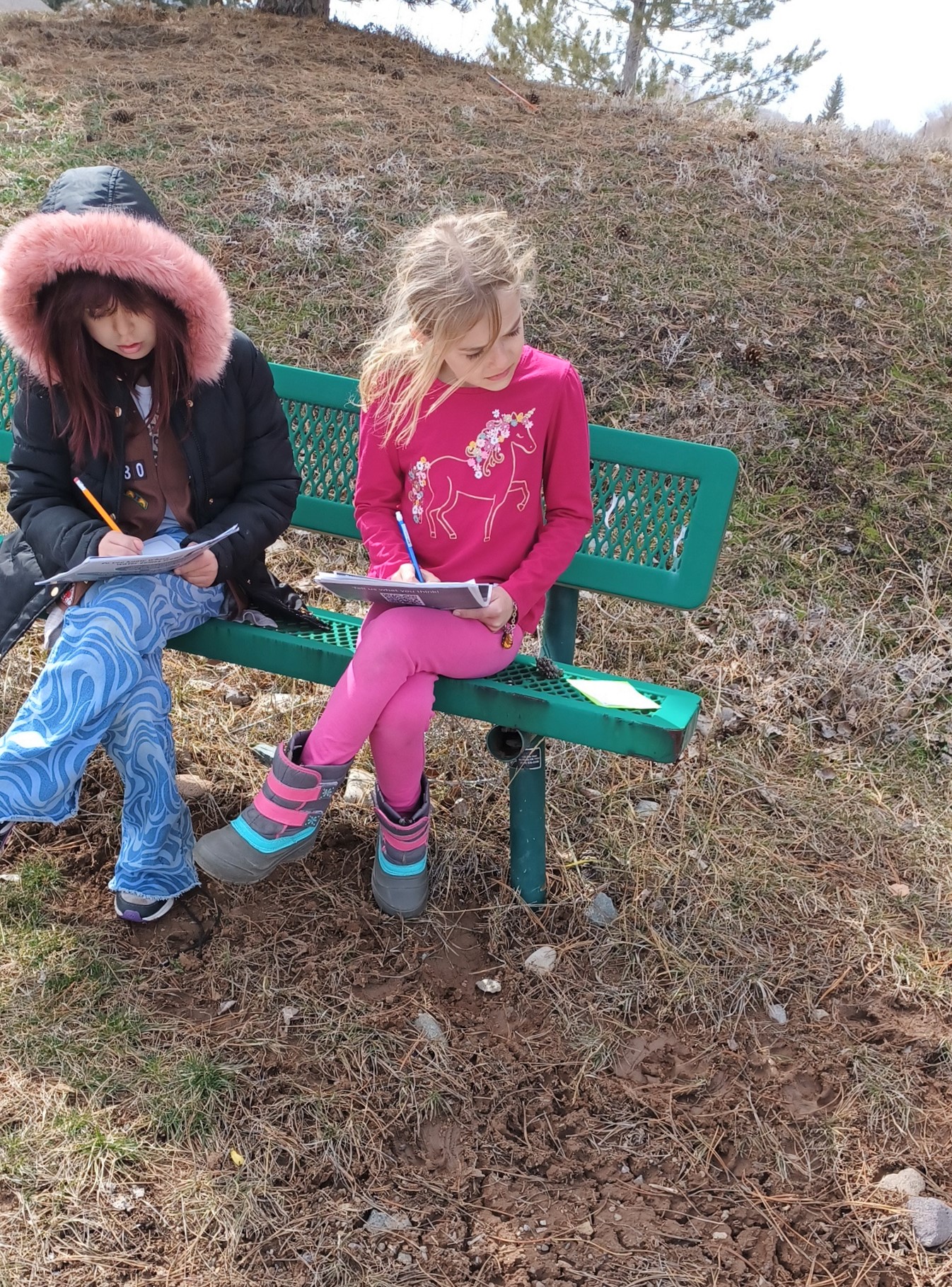Brief
We Are Water Patch Activity Promotes Action for Watershed Stewardship
Connected Science Learning July–August 2023 (Volume 5, Issue 4)
By Annamarie Schaecher, Brigitta Rongstad Strong, and Anne U. Gold

Water is a topic that is important for many communities in the arid southwestern United States. One way to address water scarcity and build agency in youth is by providing a framework for how to become watershed caretakers or stewards. The We are Water Patch “Be a Watershed Steward” booklet provides a structured set of watershed restoration principles and simple but effective engagement activities that promote an understanding of the role of local watersheds in providing clean, healthy water. The colorful and engaging booklet outlines the activities that learners complete to earn the We are Water patch.
The We are Water patch can extend students’ classroom learning about the water cycle. The activity booklet is a potential bridge between the classroom and informal science education groups like the Girl and Boy Scouts, after-school programs, or library programs. Teachers and scout leaders or after-school educators can collaborate on a water cycle unit, with teaching about the water cycle taking place in the classroom and the engaging application of the knowledge happening in the out-of-school context. Learners only need to venture outside the classroom door to become familiar with how water moves and changes in their local watershed. The scout leaders or after-school educators can direct the patch activity landscape observations. To facilitate collaborations, libraries can host an educator open house event where environmental educators, after-school programs and formal educators can learn about one another’s offerings and opportunities for partnerships. The local library could serve as the place to showcase the completed watershed restoration projects.
In the We are Water Patch activity sequence, the main learning objective is to understand that water should be allowed to seep into the land so that it is available to sustain plants and animals. The observation-based patch activity sequence inspires an understanding of how rainfall and or snowmelt flow in a study area that learners identify in their community, such as a local park, their backyard, or an empty plot of land near them. Making observations in the study area of how water interacts with the land over time promotes a personal connection to the water cycle. Learners assess their study area for evidence of erosion and habitat health. The observations can be conducted over a few weeks, or they can be distributed over the entirety of the school year (see Table 1 in Supplemental Resources for the time needed to complete each activity).
In the next step to earn the patch, learners can choose from a menu of simple watershed restoration projects that are included to promote water infiltration in the land, to “slow it, spread it, sink it.” By making small improvements to the land, learners see that their actions influence how water moves through the system.
The patch booklets, which are available in English and Spanish, are divided into two versions: a junior version for grades 2 and 3 and a version for grades 4 and up. Younger learners focus on making observations of how water interacts with the land. Older participants are further tasked with understanding their watershed in a historical context. For example, they interview a long-term watershed resident to understand the area’s historical conditions. This understanding gives agency to youth to ensure the watershed’s future health.


Scout leaders from an upper elementary girl scout program in rural Colorado reported that after completing the patch activity sequence, the participating scouts were more aware of erosion in their community. The leader said, “We recently had some major flooding in our area, so we got to see a lot of gully erosion and it really hit home for the girls to see that.” Because of the patch’s place-based learning activities, the troop now plans to meet with the town’s staff to see the water flow evaluation the town is developing to better understand the issue and find a way the scouts can help.
The patch activity was developed as part of the We are Water traveling library exhibit that endeavors to engage rural communities in the southwestern United States in discussions about important local water issues. The exhibit content and supporting educational materials, including the We are Water patch, were informed by a 2020 community needs assessment, which included surveys and phone interviews around the topic of water. The patch activity booklet is currently available on the We are Water website and printed booklets are available at some of the We are Water host libraries in the desert Southwest.
Annamarie Schaecher is a Community Engagement Coordinator with the Cooperative Institute for Research in Environmental Science (CIRES) Education and Outreach, Brigitta Rongstad Strong is a Program Manager with CIRES Education and Outreach, and Anne U. Gold is the Director of CIRES Education and Outreach, all at the University of Colorado Boulder.
Environmental Science Inquiry Instructional Materials STEM Elementary Informal Education


